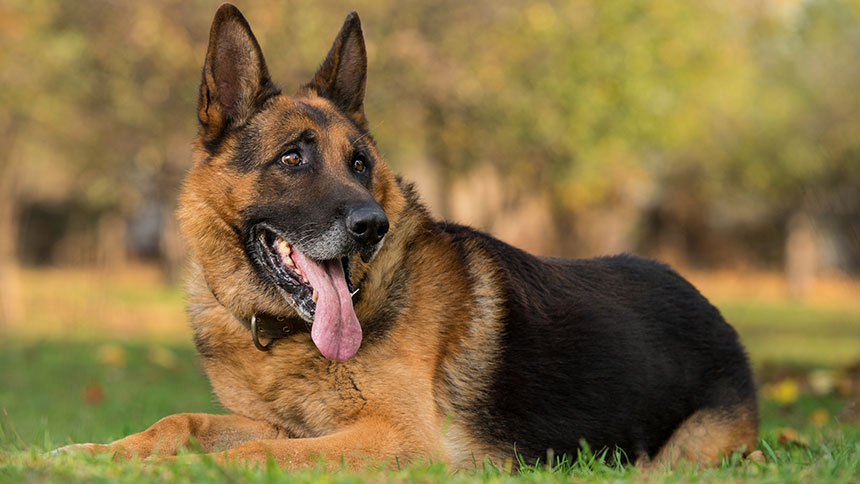Regardless of their breed, the health of our pets depends largely on the care we give them. We must understand that they need us to take proper care of health, especially when it comes to hygiene and food. If we are careless, our adorable little creatures will be at risk.
It may be that the hygiene tasks that a pet needs are not very pleasant to perform for us and that doing them causes us some repulsion. However, they are necessary, and unless we have the time and resources to get professional help, we will have to put aside our modesty and get to work.
What Is Dog Smegma?
Contents
Smegma, also known as femiga, is a natural secretion that accumulates in the genitals of mammals (male or female) and must be cleaned regularly. This secretion is the product of cell turnover and is mixed with the Tyson glands’ sebum. It accumulates in males around the glans and on the inside of the foreskin. It also occurs in females and must be cleaned to avoid future inconveniences.
What Causes Dog Smegma?
Smegma is caused by the mixing of dead cells from cell turnover mixed with secretions from the Tyson gland, or sebum. These two substances mix to form this thick compound and, in many cases, with a strong odor in the genital areas of canines and even humans.
If it is not cleaned regularly, it could cause infections and other diseases in the genital areas of dogs. Although they are female, they need regular care and hygiene in the area.
Dog Smegma Infection Symptoms
Balanoposthitis is the most common symptom when it comes to infections caused by smegma in a dog. This is characterized by an inflammation of the glans and foreskin.
- Inflammation of the glans or balanitis: this is an inflammation that occurs in the glans due to infection caused by bacteria that are generally part of the penile’s ecosystem.
- Inflammation of the foreskin or prostatitis: It is an inflammation of the tissues that make up the foreskin of the dog’s penis. Like balanitis, it can be caused by bacterial agents typical of the area.
- Presence of pus: In dogs, it is very common that if there is balanoposthitis, there is a secretion of pus. However, this can appear without the need for inflammation or being evident. This pus can be yellowish or green in color and have a bad odor.
- Follicles and ulcers: These wounds or follicles can appear suddenly and are clear evidence of infection.
Is Smegma Problematic?
Yes, without a doubt. Although it is a natural secretion of all mammals, it is necessary to maintain proper hygiene not to become a problem. The accumulation of smegma can cause infections, as already mentioned, although not immediately, but it can be an excellent catalyst for external pathogens that can contaminate the area.
Dog Smegma Treatment

Treatment for smegma is preventive. Good hygiene can keep the area clean and prevent buildup, which is the real problem. However, if any symptoms of infection have already appeared, there are some appropriate treatments.
- First, you have to visit the vet to have an accurate diagnosis. This will carry out culture to confirm and define the appropriate treatment.
- Treatment depends on the underlying causes of the problem. However, you will usually only need oral or topical antibiotics.
- If there is a discharge of pus in the area of the penis, it is advisable to wash with hot water and diluted iodine. However, chlorhexidine may also be a viable option.
- The use of the Elizabethan collar is a way to prevent the dog from licking the penis. Remember that this is a reflex action they take when they feel discomfort or pain in the area.
- The use of antihistamines or corticosteroids can also help reduce secretions depending on their causes. That is why a visit to the vet is essential.
- Neutering can decrease the frequency of discharge even if it does not completely end the problem.
- As a last resort, penectomy is the most effective way to end the problem if much progress has already been made and there is the presence of necrosis, lacerations, or abscesses.
How To Clean Dog Smegma By Yourself?
The most important thing will always be prevention. Maintaining proper hygiene can prevent many problems related to smegma buildup in both adult dogs and puppies.
Washing the penis of dogs
- Always perform an external wash. Avoid the accumulation of dirt in the areas of the breasts, navel, and folds of the penis.
- You can use products and items to assist you in the task. For example, the use of exclusive towels to clean the area is a very good option.
- Always use hypoallergenic products that do not leave residues.
Lavage of the vulva in females
- Females are much more prone to microorganisms and other environmental substances since the vulva is always exposed.
- Make sure that vaginal washing is part of a hygiene habit; in this way, you will avoid the vaginitis that is so frequent in these animals. To do this, use aseptic solutions recommended by your veterinarian.
- If the bitch is not spayed during heat, the risk of contracting infections increases, especially during the heating season. So you have to take extreme hygiene measures.
- Use wet wipes on the outside to remove dirt. Always avoid scent wipes.
- Always keep the vaginal area dry. Humidity is the ideal environment for the proliferation of bacteria.
- During pregnancy, or if you have just had puppies, hygiene becomes a must. The care of the vulva is necessary and should be done periodically with lukewarm water and dry very well afterward.
- Constant vigilance must be maintained over the area and detect any discoloration, signs of infection, discharge with pus, or a bad smell.
- Always be vigilant, and at any sign of trouble, see your vet.
When does dog smegma stop?
The smegma nape disappears; it is a normal secretion of all mammals; even humans secrete the same substance. Like us, canines need to keep their private parts clean and healthy; for that, it is only necessary to follow the hygiene recommendations and not wait for the appearance of problems to visit the vet.
Prevention is always the best treatment. Maintaining good hygiene habits in our pets can keep them safe from possible diseases. The only way that a male dog will not produce smegma is by pointing the penis. But keeping your genital area clean and dry will avoid such a traumatic measure. Remember that smegma buildup is the problem.




